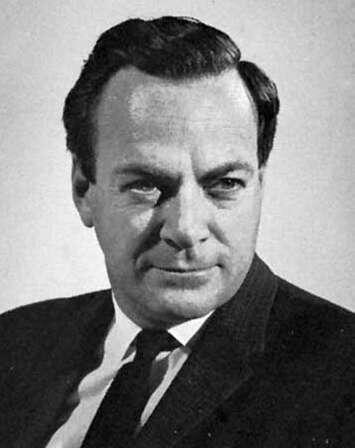Richard Feynman is an American theoretical physicist who is considered to be one of the brightest personalities in the physical science of the 20th century (McKie). He was born in 1918 in New York in a family of Russian and Polish Jews. He got interested in science already as a child and this interest was encouraged by his parents. Thus, his father bought him encyclopedias and took him to museums (Gribbin and Gribbin 6). Due to his father, Feynman learned the difference “between knowing the name of something and knowing something” (Gribbin and Gribbin 7). On the whole, he had warm relations with his parents, and they contributed much to him becoming an outstanding personality and a scientist.

Feynman was producing original ideas in science at a rather young age. Thus, being a physics student at the Massachusetts Institute of Technology, he suggested an unusual approach to calculating forces in molecules as a part of his undergraduate thesis in 1939 (Gleik). Three years later, in 1942, he received a doctorate at Princeton University. Under the guidance of his university adviser, Feynman created a new approach to quantum mechanics with the use of the principle of least action.
At the time of the Second World War, a young scientist became a staff member in the United States atomic bomb project developed at Princeton University during 1941-1942 (Gleik). Later, in 1943-1945, he was recruited to work at the secret laboratory at Los Alamos, where he headed a group in the theoretical division involved in the Manhattan Project. By the end of the war, he got a position of an associate professor at Cornell University where he worked until 1950 (Gleik). Thus, he received an opportunity to continue his research on the fundamental concept of quantum electrodynamics.
Feynman was a fascinated fan of his subject. An introduction to the book Quantum Man: Richard Feynman’s Life in Science begins with citing Feynman’s words about physics: “I find physics is a wonderful subject. We know so very much and then subsume it into so very few equations that we can say we know very little” (Krauss 1). Apart from quantum electrodynamics, Feynman made a valuable contribution to physical science presenting the basic concepts of the field, which is now known as nanotechnology (“Richard Feynman Introduces the World to Nanotechnology”). In 1959, he presented a talk “There’s Plenty of Room at the Bottom,” which was the reflection of his vision about “controlling matter at the nanoscale, including controlling individual atoms” (Toumey). This talk also explained a technique providing an opportunity to use the beam of an electron microscope for text generation, with further creation of silicon molds of this writing, thus allowing the production of text copies. He won a Nobel Prize in physics in 1965 for fundamental work in quantum electrodynamics.
On the whole, Feynman made a great contribution to the study of physics. His writings include both scholarly works and textbooks, which are used by physics students worldwide. However, the scientist died from cancer in 1988, being still more popular within the scientific community. Probably, the first appeared to the broad public in 1986, when he participated in the presidential commission, which investigated the disaster of the space shuttle Challenger. Still, he became more famous after death, particularly after two autobiographical collections of anecdotes were published.
Works Cited
Gleik, James. “Richard Feynman.”Encyclopedia Britannica, Web.
Gribbin, John, and Mary Gribbin. Richard Feynman: A Life in Science. Icon Books, 1997.
Krauss, Lawrence. Quantum Man: Richard Feynman’s Life in Science. W.W. Norton & Company, 2012.
McKie, Robin. “The 10 Best Physicists.”The Guardian, 2013, Web.
“Richard Feynman Introduces the World to Nanotechnology with Two Seminal Lectures (1959 & 1984).”Open Culture. 2013. Web.
Toumey, Chris. “Feynman and Nanotechnology – Anniversary Reflections.”Nanowerk, Web.